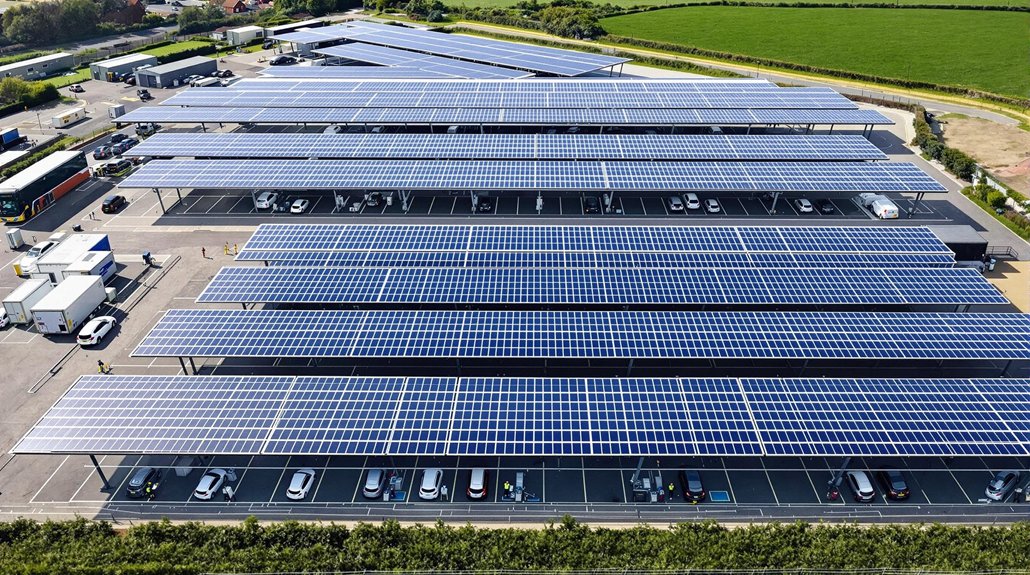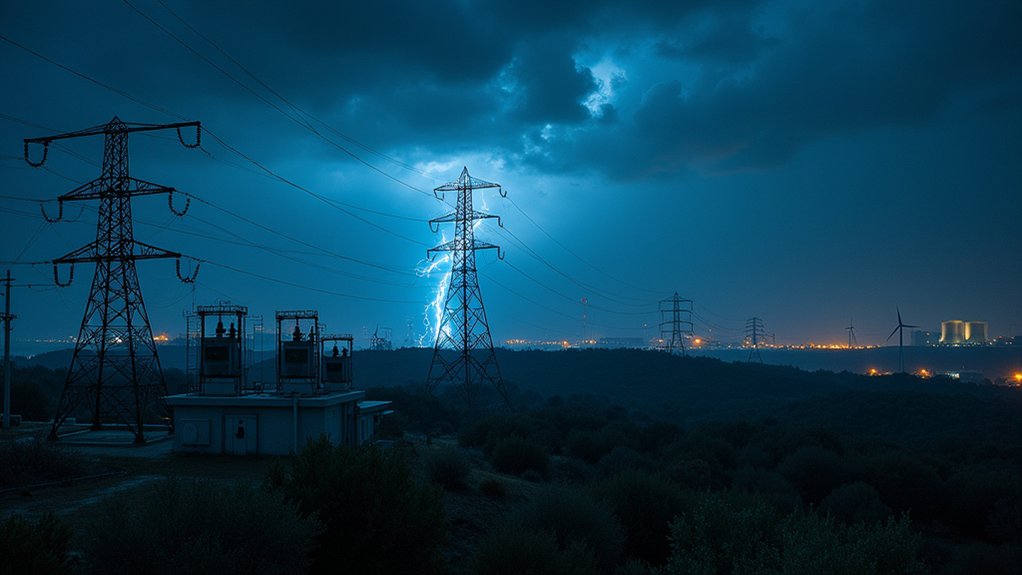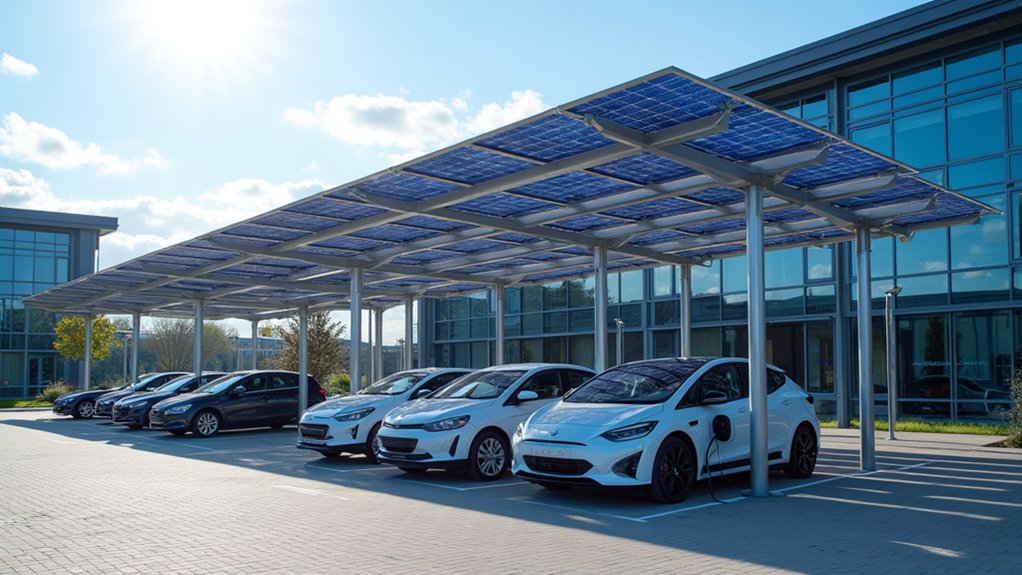While solar farms typically consume vast tracts of agricultural land, Cambridgeshire County Council has pioneered an innovative alternative with the UK’s largest solar carport at St Ives Park & Ride. The £3 million project transforms existing infrastructure into a clean energy powerhouse, with canopies fitted above central parking bays producing between 948 kW and 1 MW of electricity. In my assessment, this dual-use approach represents one of the most efficient uses of developed space in Britain’s renewable portfolio.
The technical implementation includes three main solar canopies constructed with low-reflection PV modules, optimizing generation throughout the year’s variable light conditions. Battery storage systems capture excess electricity during peak sunlight hours, allowing for energy discharge when production wanes. This setup creates a seamless power management system, with surplus energy feeding back to the national grid while facilitating stable supply for onsite EV charging stations and LED lighting installations.
Future-proof energy management: low-reflection PV modules paired with strategic storage systems create self-sustaining infrastructure for the modern grid.
Financing for the project splits neatly, with half coming from European Regional Development funds and the remainder from local council investment. The sale of surplus electricity to local customers creates a revenue stream that partially offsets operational costs. This cost-recovery model, rarely achieved in public infrastructure projects, demonstrates remarkable fiscal planning.
Environmental benefits extend beyond carbon reduction. The installation requires no additional land use, provides shade for vehicles, and includes biodiversity improvements through landscaping, tree planting, and hibernaculum installation. The project is projected to save approximately 15,025 tonnes of carbon emissions over its 30-year lifespan. The carbon footprint saved here might be modest in global terms, but the demonstration effect could prove significant.
The St Ives project functions as part of a wider smart energy grid demonstration in partnership with UK Power Networks, creating a blueprint for urban energy innovation. Data collected will inform future deployments across Britain, potentially revealing new funding mechanisms for local authorities.
The OJEU-compliant competitive tendering process guarantees best practices have been followed, creating a replicable model that other councils can adopt with minimal modification. Solar carports may just be where practicality meets sustainability in Britain’s renewable future. The initiative aims to create a replicable model for future smart grid deployments across the country.









